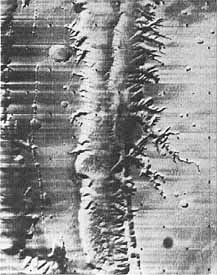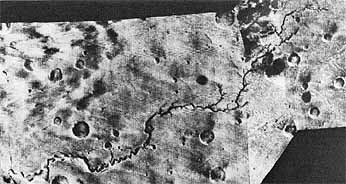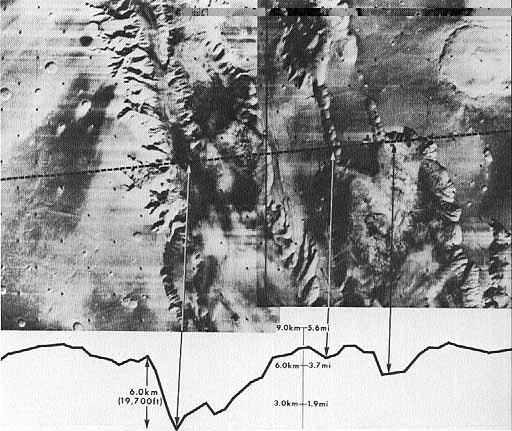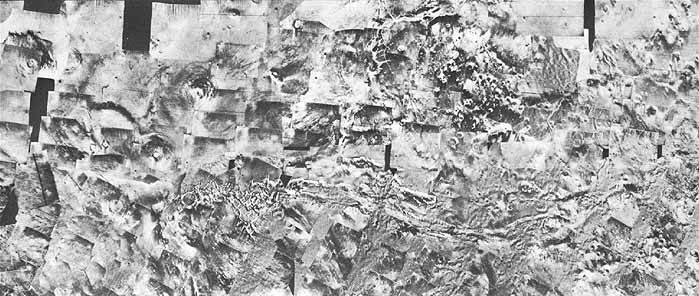- [295] Mariner
9's wide-angle TV camera
on 12 January 1972 photographed the vast chasm at
right, with branching canyons eroding the plateau.
These featrures in the Tithonius Lacus, 480 km south
of the equator, represent a landform evolution
apparently unique to Mars. The ressemblance to
treelike tributaries of a stream is probably
superficial, for many of the "tributary" canyons are
closed depressions. Subsidence along lines of weakness
in the crust and possibly deflation by winds have
sculptured the pattern. The photo, taken from 1977 km
away, covers 376 by 480 km. The mosaic of two photos
below, taken of Tithonius Lacus region from 1722 km,
covers as area 644 km across and shows a section of
Valles Marineris. Pressure measurements by Mariner's
ultraviolet spectrometer registered a canyon depth of
6 km (the Grand Canyon in Arizona is 1.6 km deep). The
dotted line is the UVS instrument's scan path. The
profile line below shows measurements converted to
relative surface elevations. The photo on the
following page shows the full length of the canyon
system.
|

|



















